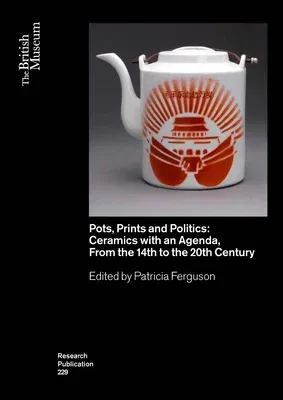Pots, Prints and Politics: Ceramics with an Agenda, from the 14th to the 20th CenturyPaperback, 26 May 2021

Qty
1
Turbo
Ships in 2 - 3 days
Only 1 left
Free Delivery
Cash on Delivery
15 Days
Free Returns
Secure Checkout

Part of Series
British Museum Research Publications
Print Length
196 pages
Language
English
Publisher
British Museum Press
Date Published
26 May 2021
ISBN-10
0861592298
ISBN-13
9780861592296
Description
Product Details
Book Format:
Paperback
Country of Origin:
GB
Date Published:
26 May 2021
Dimensions:
29.46 x
20.83 x
1.52 cm
ISBN-10:
0861592298
ISBN-13:
9780861592296
Language:
English
Pages:
196
Publisher:
Weight:
703.07 gm